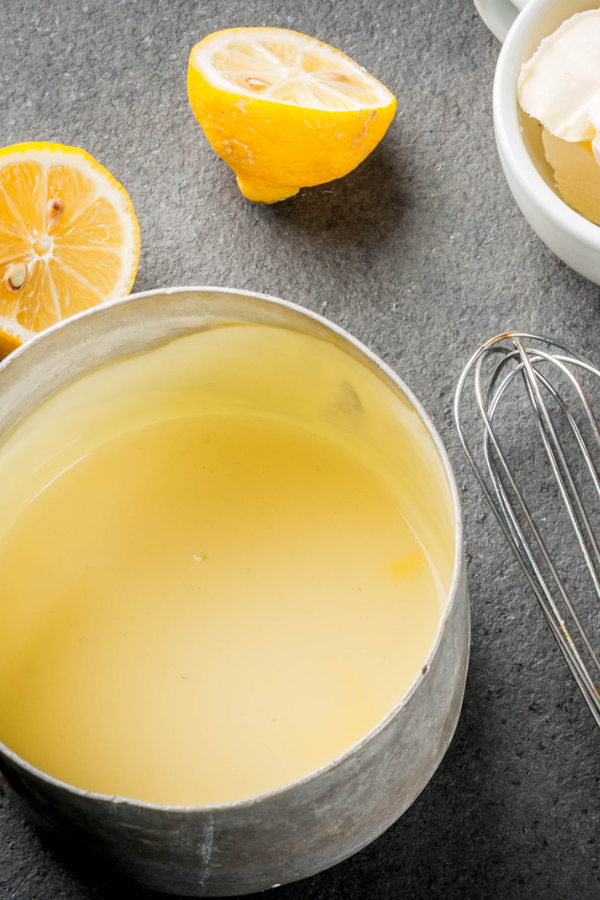Hollandaise sauce, with its velvety texture and rich flavor, is a classic French sauce that elevates any dish it accompanies. Whether drizzled over eggs Benedict, grilled asparagus, or poached salmon, mastering the art of hollandaise sauce is a skill worth acquiring. In this comprehensive guide, we’ll explore the origins of hollandaise sauce, provide a detailed recipe with step-by-step instructions, offer troubleshooting tips, and suggest serving ideas to make your culinary creations truly shine.
This post is all about how to make the best Hollandaise Sauce!

What is Hollandaise Sauce and Its Origin
Hollandaise sauce is a smooth and creamy emulsion of butter, egg yolks, and lemon juice or vinegar, seasoned with a touch of salt and pepper. It originated in France, with its name suggesting a connection to the Dutch due to the use of clarified butter, which was popular in Dutch cuisine. This velvety sauce is one of the five mother sauces in French cuisine, showcasing the mastery of the delicate art of emulsification.
Ingredients for Hollandaise Sauce
3 large egg yolks
1 tablespoon lemon juice or white vinegar
1/2 cup unsalted butter, melted and clarified
Pinch of salt
Pinch of cayenne pepper, black pepper or a dash of hot sauce (optional)

Method for Making the Sauce
In a saucepan, combine the egg yolks and lemon juice or vinegar. Whisk together until the mixture is pale and frothy.
Place the saucepan over low heat on the stove.
While whisking continuously, slowly pour in the melted clarified butter in a steady stream. Keep whisking until the sauce begins to thicken and emulsify.
Continue cooking and whisking until the sauce reaches a smooth and creamy consistency. Be careful not to let the sauce get too hot or the eggs may scramble.
Once the sauce has thickened to your liking, remove the saucepan from the heat.
Season the egg sauce with a pinch of salt and black pepper, cayenne pepper or hot sauce, if desired. Adjust the seasoning to taste.
Serve the sauce immediately or keep it warm until ready to use, stirring occasionally to prevent a skin from forming on top.
Fixing a Broken Hollandaise Sauce
If your hollandaise sauce separates or becomes too thick, you can try to fix it by whisking in a tablespoon of warm water or lemon juice. Alternatively, you can slowly whisk in another egg yolk to help stabilize the emulsion and bring the sauce back together.

Tips and Notes for Making the Perfect Sauce
Use clarified butter to prevent the sauce from becoming too greasy.
Keep the heat low and whisk continuously to avoid scrambling the egg yolks.
For a thicker sauce, reduce the amount of lemon juice or vinegar used.
You can also make hollandaise sauce in a blender for a quicker and easier preparation process.
What to Serve with this Delicios Sauce
This sauce is a versatile condiment that pairs well with a variety of dishes, including:
Eggs Benedict
Grilled or steamed vegetables such as asparagus, broccoli, or artichokes
Poached or grilled fish like salmon or halibut
Roasted potatoes or brunch classics like Eggs Florentine

Storing and Using the Sauce
Leftover hollandaise sauce can be stored in an airtight container in the refrigerator for up to 2-3 days. To reheat, gently warm the sauce in a heatproof bowl placed over a pot of simmering water, whisking constantly until smooth and creamy.
With this comprehensive guide, you’re equipped with all the knowledge and skills needed to master the art of hollandaise sauce. From its origins in French cuisine to the step-by-step recipe and troubleshooting tips, you’ll be creating velvety-smooth hollandaise sauce that’s sure to impress your family and friends. So go ahead, elevate your culinary creations with this classic sauce and savor the rich flavors of of this egg yolk sauce in every bite. Bon appétit!
This post was all about how to make the best Hollandaise Sauce!
You can also try our other recipes:
Leave a Reply